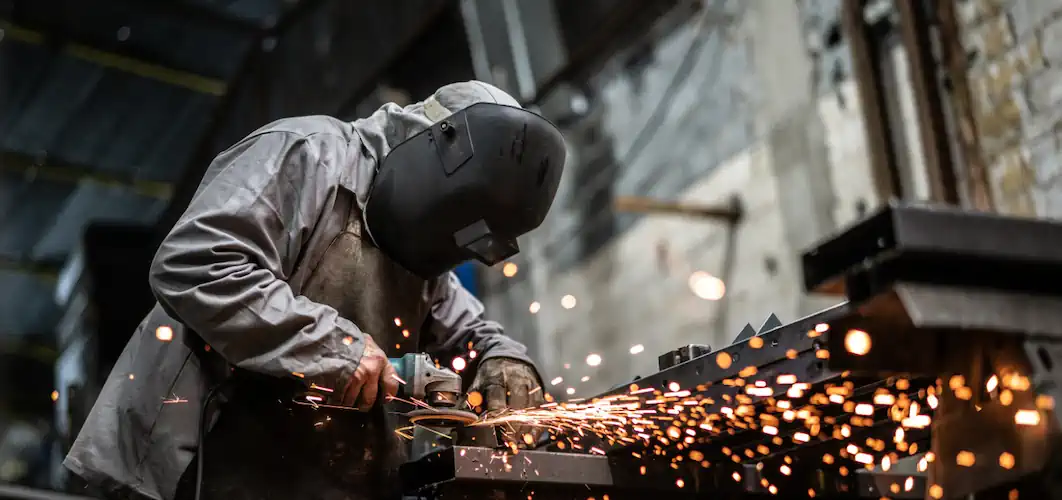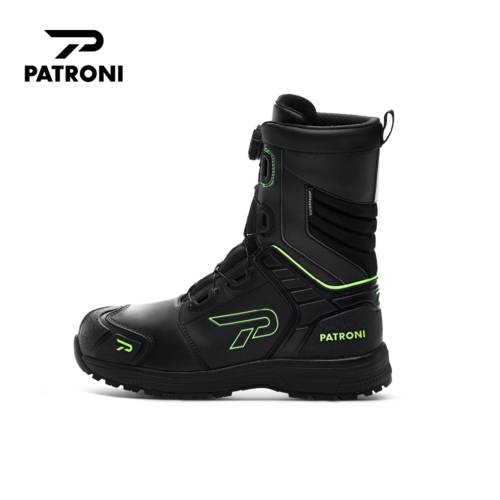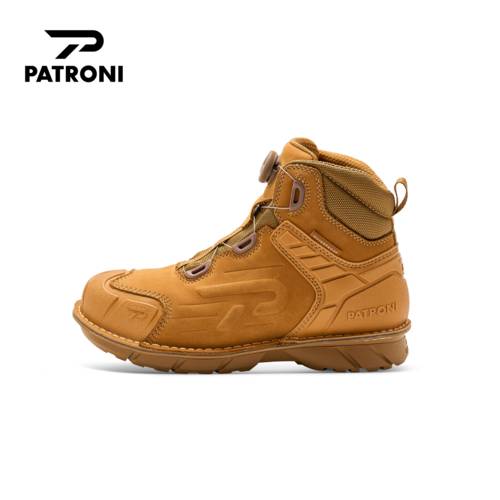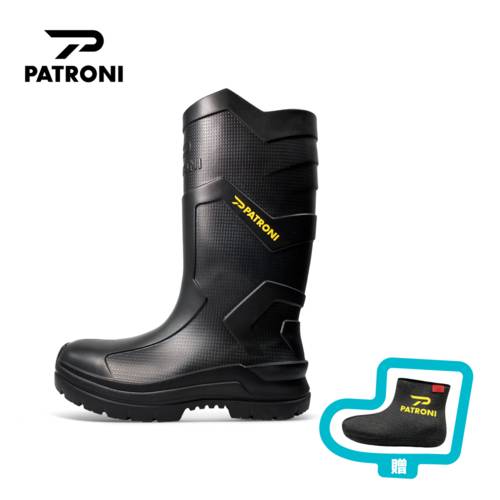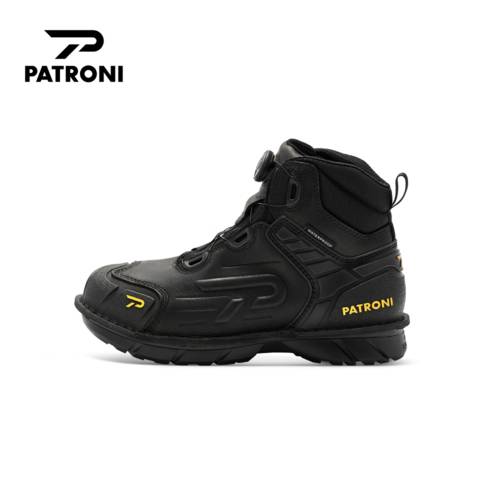HOW DOES A COOLING VEST WORK?
A COMPREHENSIVE GUIDE
Summers can be unbearable for those who work outdoors since the intense heat makes their skin very sensitive. Additionally, intense heat can cause dehydration, heat exhaustion, heatstroke, and fatigue. It can also exacerbate pre-existing health conditions, especially cardio-respiratory, renal, and endocrine conditions, as well as respiratory conditions such as asthma or chronic obstructive pulmonary disease (COPD). The same problem arises for workers in factories where hot materials are often used for manufacturing and production.
Thankfully, there are several products available, besides ice packs, that can help keep you cool during the warm months. One such product is a cooling vest that can help regulate your body temperature and prevent heat exhaustion.
In this comprehensive guide, we will answer your query about 'How does a cooling vest work?', its mechanics, and the different types of cooling vests currently available.

WHAT IS A COOLING VEST?
A cooling vest is a wearable air-conditioning unit designed to regulate the body temperature. It works by circulating chilled water through a series of tubes that are sewn into the vest. A pump that is powered by an electric battery circulates the water, and the chilled liquid removes the body's heat as it flows through the tubes.
Cooling vests are designed to be lightweight and easy to wear, making them an excellent choice for people who work outdoors and participate in highly intensive activities. This includes people like construction workers and those on offshore platforms facing temperatures of over 40°C (104°F).
Most cooling vests work on the principle of thermodynamics. The body has a remarkable ability to regulate heat through a process known as thermoregulation. The body generates heat, which causes perspiration and evaporation, which in turn cools the body down. However, if the environment is particularly humid or hot, the body's thermoregulation mechanism fails. It becomes overwhelmed by excessive heat and is unable to cool itself properly. This results in heat exhaustion, or worse, heatstroke. In such situations, added cooling may be necessary, and a cooling vest becomes an essential tool.

WHAT IS THE PURPOSE OF A COOLING VEST?
Cooling vests are unique kinds of wearable cooling packs designed to keep the body cool in hot environments. These vests are typically made from a special type of material that absorbs water and then slowly releases it over time, providing a cooling effect that can help regulate body temperature. Other vests are composed of cooling elements like refrigerated gel packs or ice packs, while more advanced phase-change vests consist of pockets or panels filled with phase change materials such as paraffin or salt hydrates.
The purpose of a cooling vest is to help prevent heat stress, which can occur when the body is no longer able to regulate its own temperature and body heat rises in alarming proportions. Heat stress can lead to a range of health problems, including dehydration, heat exhaustion, and even heat stroke.
Cooling vests can be particularly useful for workers who spend long hours outside in hot weather, and those who work in hot environments such as construction workers and firefighters. By helping to regulate body temperature and prevent heat stress, cooling vests can help individuals stay comfortable, healthy, and safe in even the hottest environments.
In Which Industries Can Cooling Vests Be Utilized?
Cooling vests have been around since the 1980s, but they have gained more attention in recent years due to the rise in heat-related illnesses. These cooling packs can be utilized in the following fields and industries.
- Construction and Mining Industry
Construction and mining are two industries that require workers to operate heavy machinery, handle necessary equipment, and work under dangerous conditions. The temperatures in construction and mining areas can be high and dangerous. Cooling vests made with phase change material are designed to be used in high-heat areas and are suitable for all body shapes. They offer recovery time for workers operating in tough conditions, improve their concentration, and increase work precision. Workers can wear them under their protective gear, ensuring they stay safe, cool, and hydrated.
- First Responders
Police officers, firefighters, and emergency medical technicians (EMTs) often work in high-stress, high-temperature environments. Cooling vests can help reduce the risk of heat stroke, dehydration, and other heat-related illnesses. These vests are also used by hazmat teams and other specialized units to keep their bodies cool while responding to emergency situations in protective gear.
- Agriculture
Farmers who work outside for extended periods can develop heatstroke or exhaustion due to high temperatures. Cooling vests can ensure their safety and prevent them from suffering from heat-related illnesses. Wearing cooling vests would regulate their body temperature, resulting in better productivity and performance.
- Oil And Gas
Although oil and gas are one of the highest-generating sectors globally, it poses a risk to workers' health and safety. Staff members frequently work in high-heat areas, and cooling vests can help reduce the risk to their well-being. Cooling vests with micro- cooling technology are ideal for the oil and gas sector as they can stay cooler for long hours. This feature enhances comfort levels and minimizes heat stress by regulating skin temperature.
- Manufacturing Industry
Workers in manufacturing industries often operate in enclosed areas with minimal air circulation. In facilities with no air conditioning, temperatures can rise beyond comfortable levels. Cooling vests with ice packs or evaporative technology help lower body temperature and keep workers cool and productive.

What Are The Various Techniques Employed To Cool The Body Using Cooling Vests?
For individuals working in extreme heat conditions, cooling vests have become increasingly popular as a way to cool the body and prevent heat-related illnesses. Here are some of the various techniques employed by cooling vests to keep you cool, comfortable, and safe during the sweltering summer heat.
Evaporative Cooling Technique
One of the most common techniques employed by cooling vests is the evaporative cooling technique. Evaporative cooling vests use evaporative cooling technology, which relies on the principles of evaporative cooling to offer relief from extreme heat. The vest is made up of special materials that can hold water or a gel-like substance.
This material is then placed in the freezer or soaked in water for a few minutes before it is worn. Once worn, the vest uses the body's natural heat to evaporate the water or gel, which cools the body. An evaporative cooling vest is commonly used by those working in construction or other outdoor jobs.
Phase Change Cooling Technique
Another popular technique employed by cooling vests is the phase change cooling technique. This technique uses a cooling pack that is placed in the freezer or ice water to freeze. Once frozen, the packs are placed in the phase change cooling vests, which then provide a constant, regulated cooling effect to the body for up to several hours depending on the vest design. The packs can be reused by simply putting them back in the freezer, fridge, or ice water to freeze again.
Passive Cooling Technique
Passive cooling is another technique employed by cooling vests. This technique incorporates breathable materials and heat-resistant technology to help the wearer stay cool in hot conditions. As the name suggests, passive cooling does not require any added energy or technology.
Instead, it depends on the natural airflow around the body to keep the wearer cool. And although it offers limited cooling power, this technique is ideal for use in hot and dry climates and is commonly used by military personnel, firefighters, and others working in stifling conditions.
Hybrid Cooling Technique
Hybrid cooling techniques combine the benefits of both evaporative vests and phase change cooling vests. The vest uses a combination of the two technologies to provide more efficient cooling performance. This technique is ideal for individuals who require longer cooling periods or who are working in more extreme heat conditions.
Liquid Cooling Technique
Another innovative technique employed by cooling vests is the liquid cooling technique. This involves a vest that is filled with channels that circulate cool liquid through the vest, keeping the wearer cool. Circulatory cooling vests are commonly used by individuals who require prolonged exposure to high temperatures.
Which Type Of Cooling Vest Is Suitable For My Specific Industry?

While there are numerous types of cooling vests in the market designed specifically for body cooling, it can be challenging to choose the one best suited for your industry. Testing cooling vests before undertaking their use is one option to find the ideal fit for your requirements.
Nevertheless, here is a look at how various industries can utilize cooling vests based on their needs.
Construction Industry - Evaporative Cooling Vests
Construction workers are exposed to high temperatures for prolonged periods, which can cause heat stress. A construction worker's cooling vest needs to provide long- lasting cooling relief. An evaporative cooling vest that utilizes water-soaked fabrics or gel packs can provide sustained relief to construction workers.
Agriculture Industry - High-Visibility Cooling Vests
Individuals in the agriculture industry do physically demanding work in hot conditions. A high-visibility cooling vest made of breathable material with reflective strips is suitable for such workers. The vest needs to provide comfort and essential safety features, such as visibility during night work hours.
Medical Industry - Active Cooling Vests
Healthcare professionals in the field may experience heat stress, especially during long shifts in hot and stuffy environments. Active cooling vests that use battery-powered fans or pumps that circulate cool water can provide much-needed relief to medical professionals in the field.
Manufacturing Industry - Evaporative Cooling Vests
The manufacturing industry faces the risk of heat stress due to the use of heavy machines. Therefore, the workers need to be cool and comfortable to perform well. The cooling vests used in this industry are comfortable, lightweight, and can be worn over clothing for a cooling effect that lasts for several hours.
SPECIAL MENTIONS:
While the following are specialized jackets and not vests, they're still worth mentioning because of their importance in the said industries.
Firefighting Industry - Flame-Resistant Cooling Jackets
Firefighters encounter high temperatures that can cause heat stress, dehydration, and disorientation. They need a cooling jacket that can last for longer periods, provide optimal cooling, and withstand harsh conditions . A jacket with moisture-wicking features is ideal. This type of jacket is worn under the work jacket, so it comes in direct contact with the skin for optimal efficiency. Consider a flame-resistant cooling jacket that offers long-lasting cooling for up to 4 hours.
Mining and Oil & Gas Industry - Air-Cooled Jackets
The mining and oil & gas industries are subjected to extreme temperatures, humidity, and confined spaces. This means that cooling jackets need to be heavy-duty, flame-resistant, and weather-resistant. The best option for these industries are air-cooled jackets vests that can operate with compressed air. They provide powerful cooling relief for up to 10 hours.
FINAL THOUGHTS ON HOW DOES A COOLING VEST WORK?
As technology advances and industries evolve, the use of cooling vests has become more widespread and important than ever before. These innovative garments utilize a variety of technologies in order to provide users with the ultimate level of comfort and protection from overheating.
From lightweight and breathable materials to specially designed gel packs and cooling fans, these vests can be utilized in a wide range of industries including construction and firefighting. Whether worn alone or under other protective gear, cooling vests are a vital tool for anyone who spends extended periods of time in hot or humid environments.
By helping regulate body temperature and prevent heat-related illnesses, these vests are making a meaningful impact on workplace safety and productivity.





